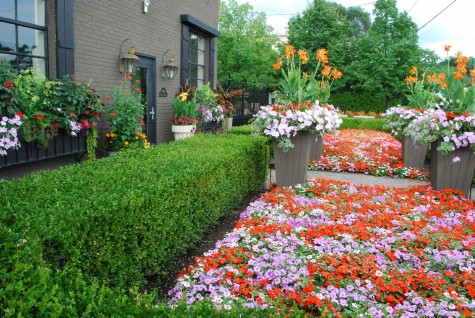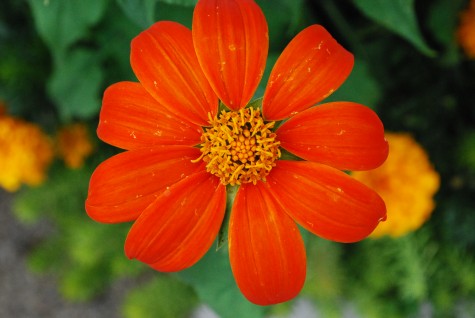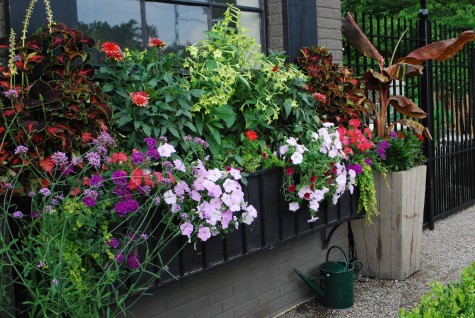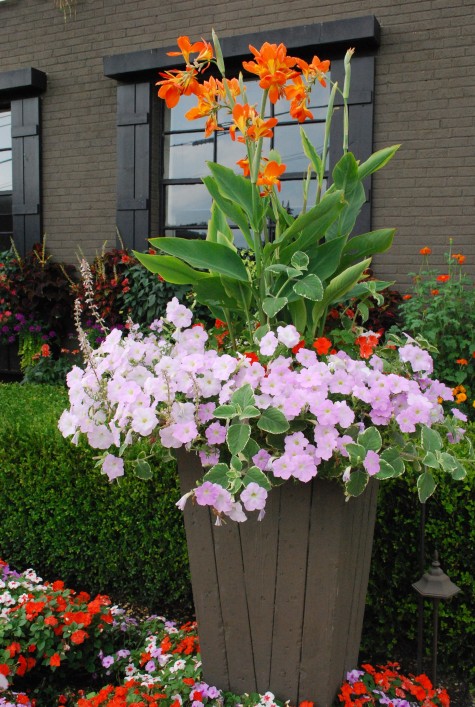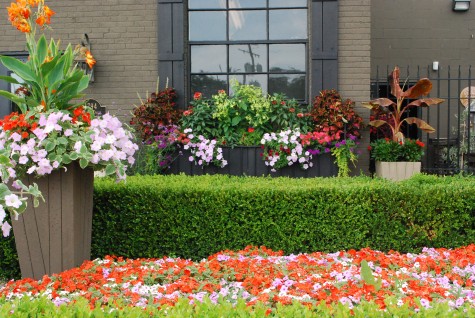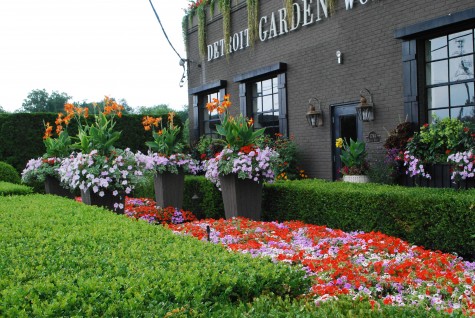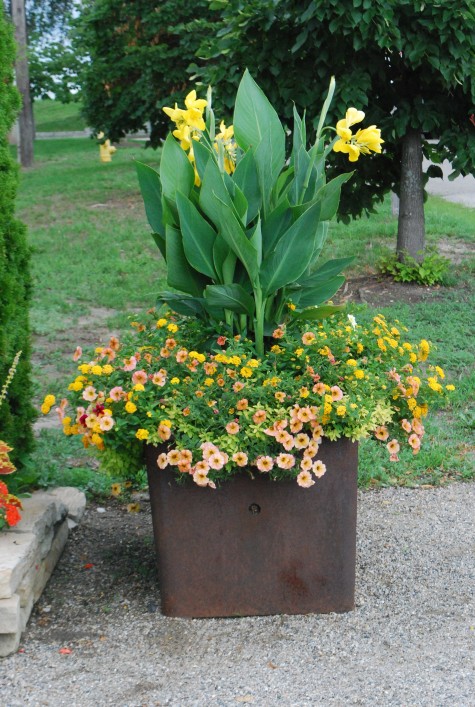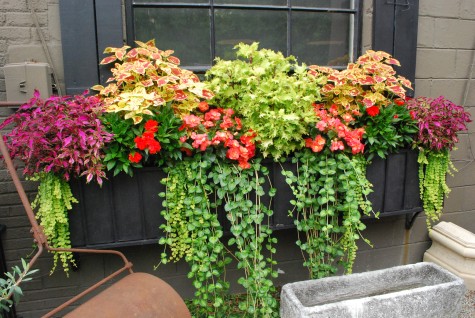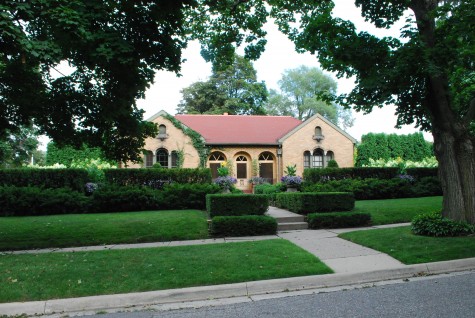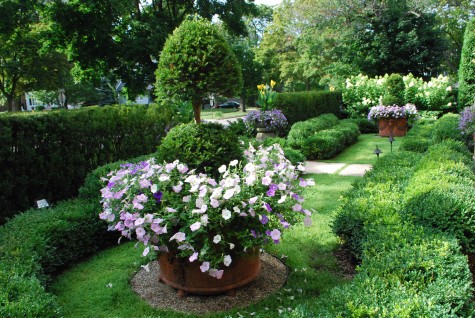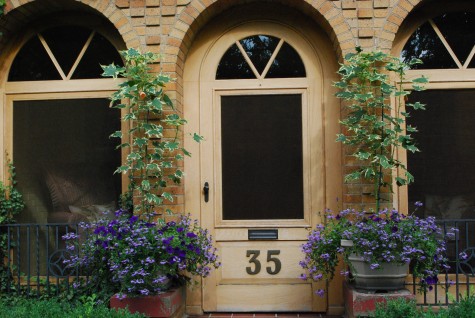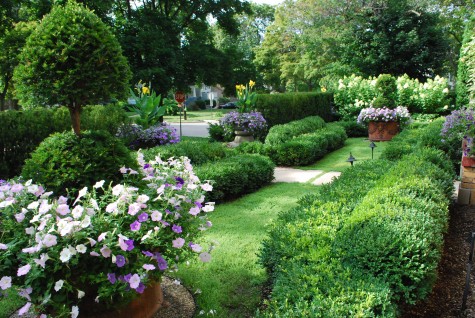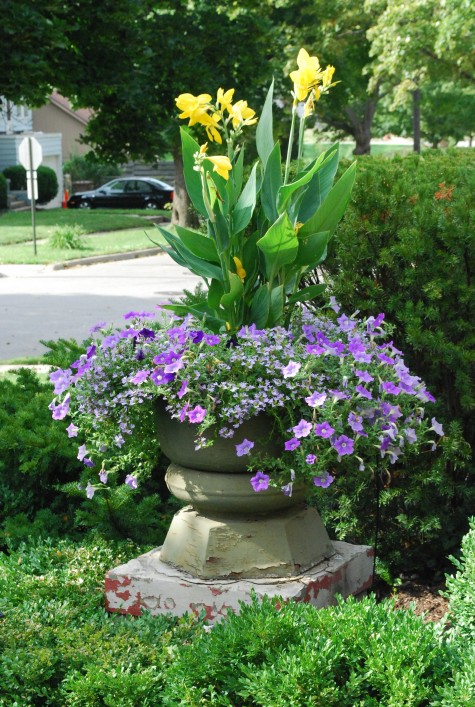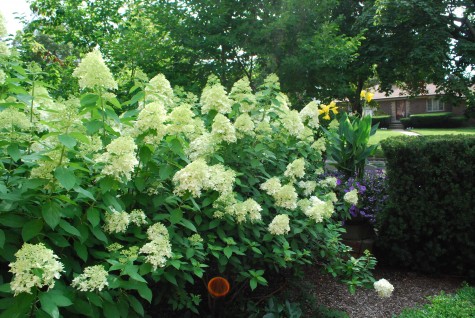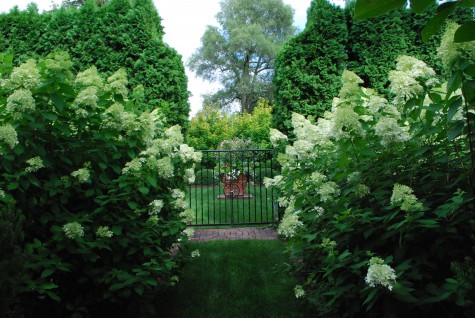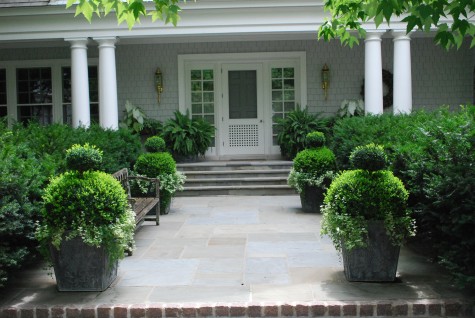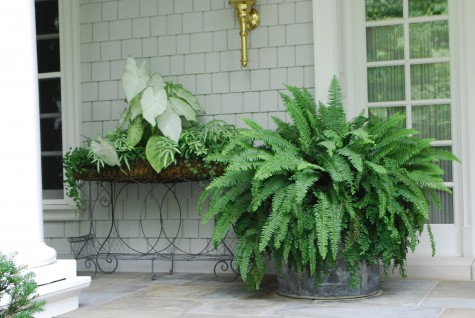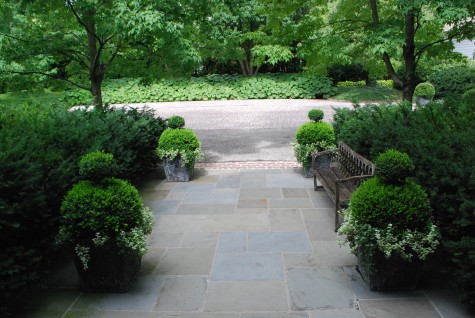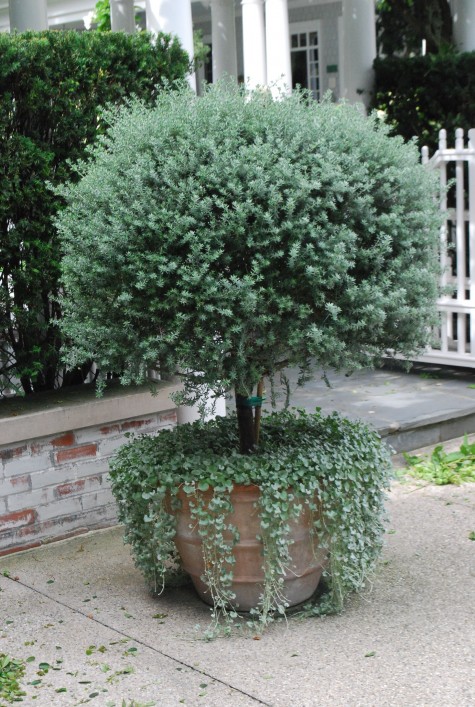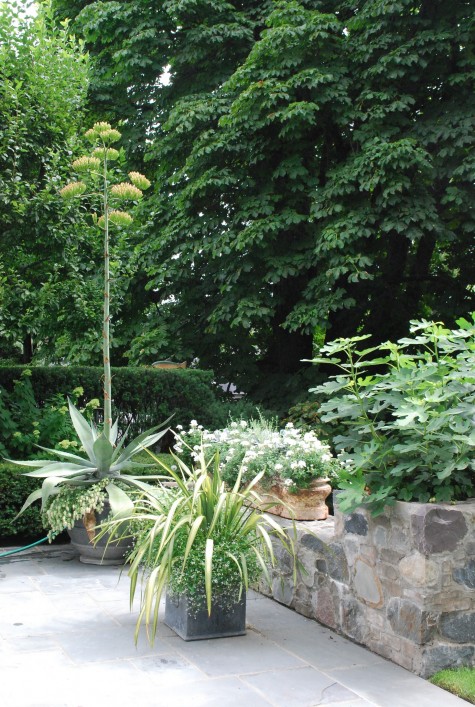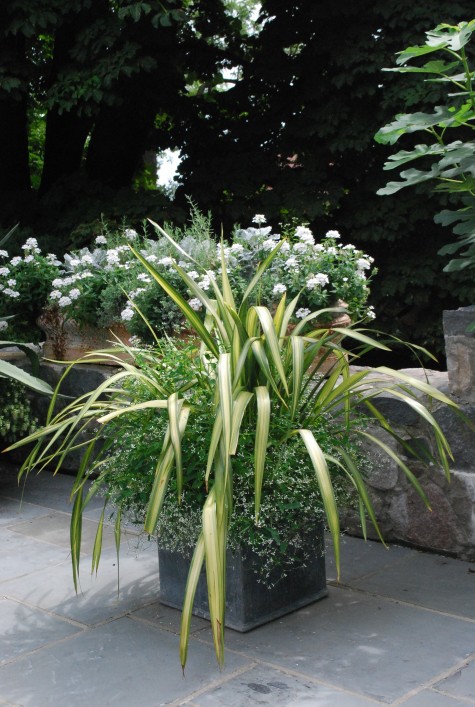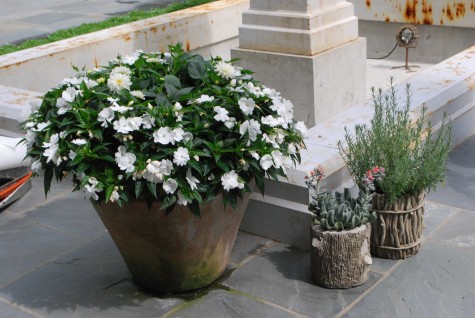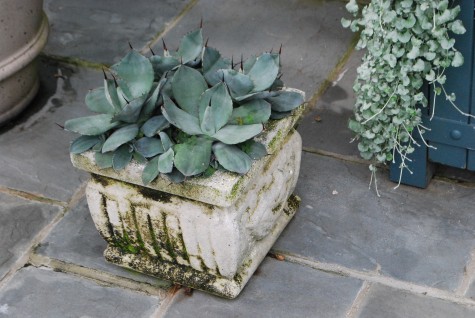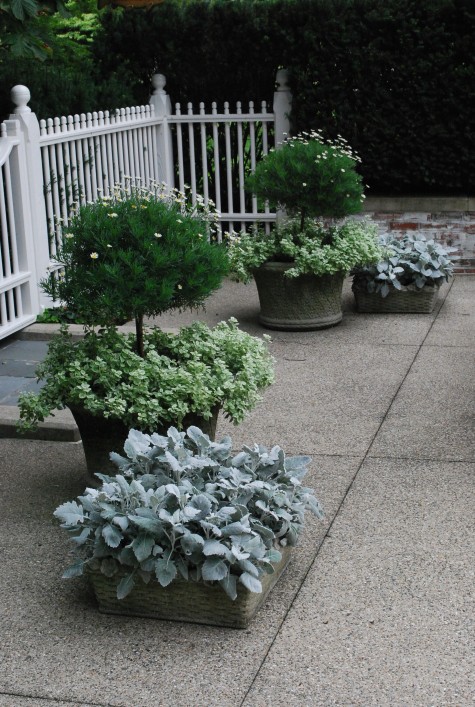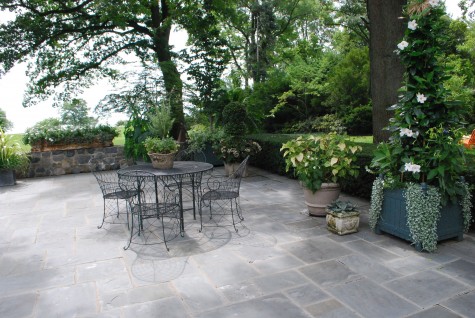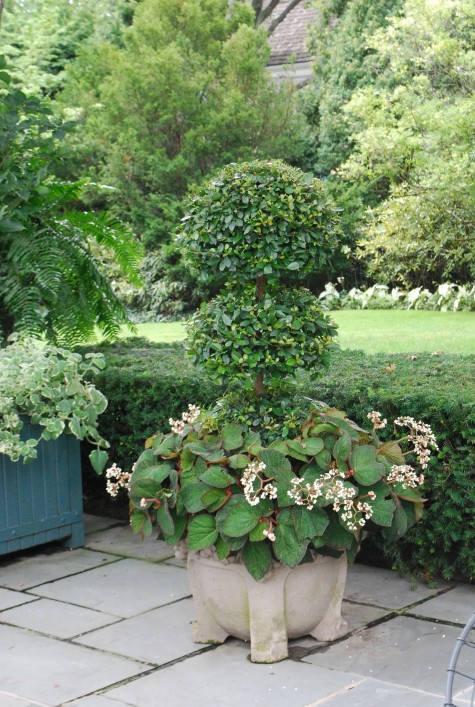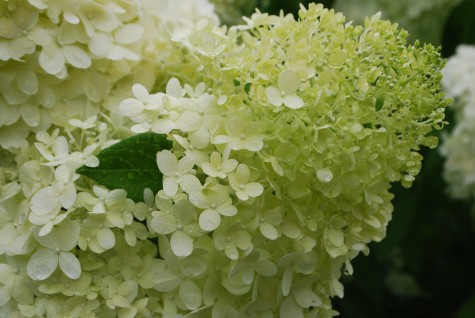 You have heard plenty from me over the past few years about hydrangeas. OK, I am crazy about them. I am reluctant to address the topic once again-but the summit of my summer is all about the coming of the hydrangeas. Hydrangeas figure prominently in any American garden. I do not plant Annabelle hydrangeas anymore. Their ball shaped flower heads flop to the ground, unless they are rigorously staked. Love the Annabelles? Plant them on top of a wall-their drooping stalks and flower heads will soften that space.
You have heard plenty from me over the past few years about hydrangeas. OK, I am crazy about them. I am reluctant to address the topic once again-but the summit of my summer is all about the coming of the hydrangeas. Hydrangeas figure prominently in any American garden. I do not plant Annabelle hydrangeas anymore. Their ball shaped flower heads flop to the ground, unless they are rigorously staked. Love the Annabelles? Plant them on top of a wall-their drooping stalks and flower heads will soften that space.
 Limelight hydrangeas are a hybrid of white blooming hydrangeas that require much less of your time and effort. They stand up straight, they bloom in August in my zone for what seems like months. The blooms acquire a pink tinge as they begin to age; they may deepen to rose pink in the late stage. Here, they happily fill in the space between the densiformis yews, and the tall evergreens. This entrance is very inviting on a summer day.
Limelight hydrangeas are a hybrid of white blooming hydrangeas that require much less of your time and effort. They stand up straight, they bloom in August in my zone for what seems like months. The blooms acquire a pink tinge as they begin to age; they may deepen to rose pink in the late stage. Here, they happily fill in the space between the densiformis yews, and the tall evergreens. This entrance is very inviting on a summer day.
 Limelight hydrangeas are strongly growing shrubs. They soften the evergreen structure of a landscape. They adapt to almost any pruning style. I have pruned them to within 14 inches of the ground, and had good flowering, and shorter height. All they need is a good set of buds above ground to develop.
Limelight hydrangeas are strongly growing shrubs. They soften the evergreen structure of a landscape. They adapt to almost any pruning style. I have pruned them to within 14 inches of the ground, and had good flowering, and shorter height. All they need is a good set of buds above ground to develop.
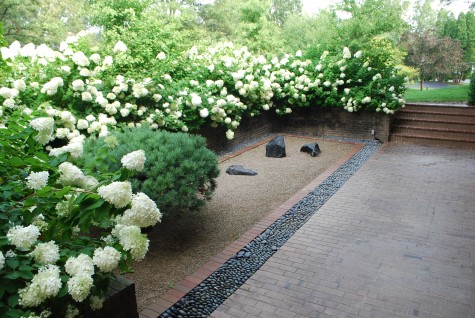 Lots of hydrangeas available now in nurseries local to me are shy bloomers. Pink or blue hydrangeas in my zone-sometimes they oblige, and sometimes not. I so love hydrangeas blooming in the summer, and I favor those varieties that perform. Should you be looking for a considerable summer show, look no further. The greenish white blooms compliment any color scheme you might have in mind.
Lots of hydrangeas available now in nurseries local to me are shy bloomers. Pink or blue hydrangeas in my zone-sometimes they oblige, and sometimes not. I so love hydrangeas blooming in the summer, and I favor those varieties that perform. Should you be looking for a considerable summer show, look no further. The greenish white blooms compliment any color scheme you might have in mind.
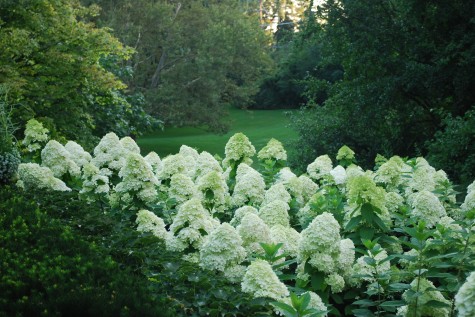 The Limelight hydrangea panicles are tall, and cone shaped. They make a big statement, planted in blocks, or rows.
The Limelight hydrangea panicles are tall, and cone shaped. They make a big statement, planted in blocks, or rows.
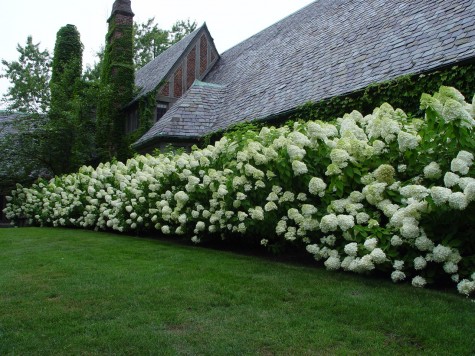 This hedge of Limelights is three staggered rows, planted 30 inches apart; it has been pruned lightly. Most of the pruning is done on the top branches, so the side branches still get enough light to flower. I so love those plants that ask for so little, and deliver so much. Not interested in a garden extravaganza such as this? One Limelight is equally as effective.
This hedge of Limelights is three staggered rows, planted 30 inches apart; it has been pruned lightly. Most of the pruning is done on the top branches, so the side branches still get enough light to flower. I so love those plants that ask for so little, and deliver so much. Not interested in a garden extravaganza such as this? One Limelight is equally as effective.

It is high summer in my zone. I have 2 big blocks of Limelight hydrangeas on my small property. Those blocks are making a very big statement today. They grow so fast-buy little ones. Plan and plant them wherever you need a plant 5- 7 feet tall. Plant them wherever you need some summer romance. I can promise you this-Limelight hydrangeas will endow your garden with a little late summer magic.

